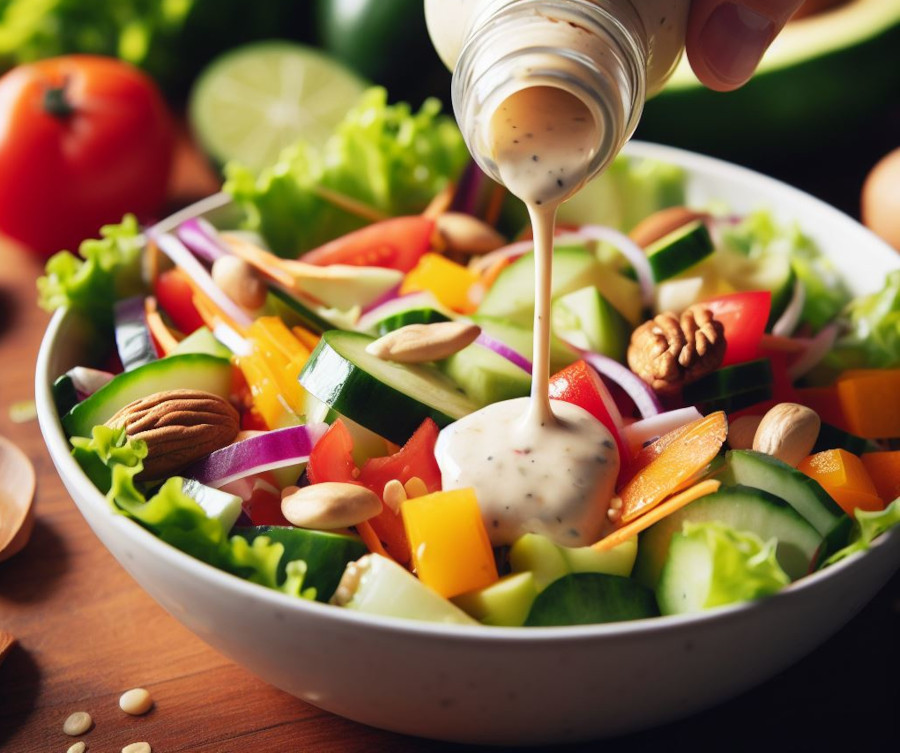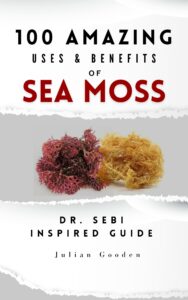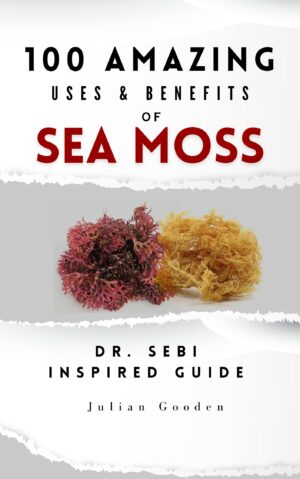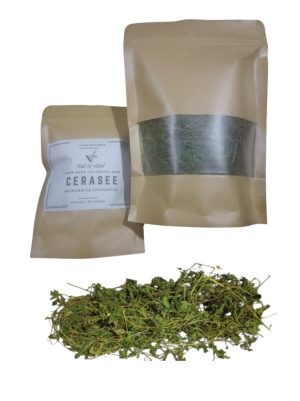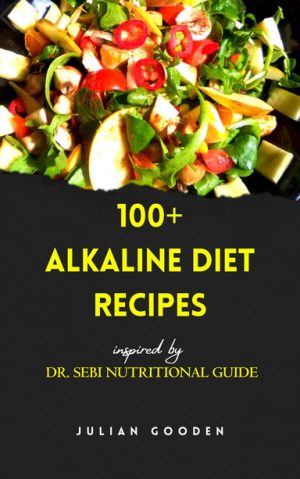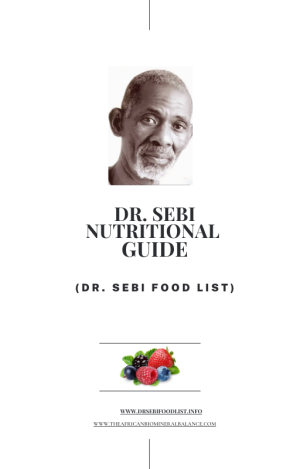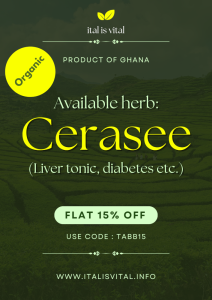Over the years, Dr. Sebi has stressed the importance of sea moss – used as both food and medicine. Dr. Sebi often pointed out that sea moss is very high in minerals and as a result is very beneficial to our health. This recipe is just one other way to incorporate sea moss into our diet.
Making an alkaline sea moss salad dressing can be a flavorful and nutritious addition to your salads. Sea moss is rich in minerals and has a gelatinous texture that can contribute to the thickness of the dressing.
Elevate your salad game with this alkaline sea moss salad dressing that’s not only nutritious but also bursting with flavor. This recipe is a unique twist on traditional dressings, for those seeking a milder, alkaline alternative. Let’s dive into a delightful combination of sea moss, hummus, and Key lime juice that will take your salads to the next level. Here’s a simple recipe for an alkaline sea moss salad dressing:
Ingredients:
- 2 tablespoons dried sea moss
- 1/2 cup spring water (for soaking sea moss)
- 1/4 cup extra-virgin olive oil
- 2 tablespoons Key lime juice
- 1 teaspoon hummus
- 1/2 teaspoon sea salt (adjust to taste)
- 1/4 teaspoon cayenne pepper
- 1 tablespoon agave nectar for sweetness (optional)
Instructions:
1. Prepare the Sea Moss:
- Rinse the dried sea moss thoroughly to remove any debris.
- Soak the sea moss in spring water for at least 4-6 hours or overnight until it becomes soft and expands.
- Rinse the sea moss again and blend it with a little spring water until it forms a smooth gel-like consistency.
2. Make the Dressing:
- In a blender, combine the sea moss gel, olive oil, key lime juice, hummus, sea salt, and cayenne pepper.
- Blend until the ingredients are well combined and the dressing has a smooth consistency.
3. Adjust Seasoning:
- Taste the dressing and adjust the salt and pepper as needed. If you prefer a slightly sweet dressing, you can add a tablespoon of agave nectar.
4. Store and Serve:
- Transfer the dressing to a glass jar or container with a tight-fitting lid.
- Refrigerate for at least an hour before serving to allow the flavors to meld.
- Shake well before using and drizzle over your favorite salads.
This unique twist on an alkaline sea moss salad dressing brings together the goodness of sea moss with the creamy texture of hummus and the tanginess of the Key lime juice. It’s a delightful and health-conscious alternative for those looking to skip mustard and garlic while still enjoying a burst of flavor in their salads. Experiment with the quantities to suit your taste and savor the goodness of this nutrient-packed dressing.
Alternatives and Additions to the Sea Moss Salad Dressing
If you’re looking for an alternative to hummus or maybe you want to add additional flavors to this salad due to personal preference, or allergy concerns, there are several options available, depending on the role of hummus in the recipe. Here are some alternatives:
- Pesto:
- Pesto, made from basil, onion, Brazil nuts, walnut cheese, and olive oil, can add a burst of flavor to sandwiches, pasta, or salads.
- Hot Sauce:
- If you’re looking for heat, hot sauce can provide a spicy kick to your dishes.
- Vinaigrette:
- A simple vinaigrette made with olive oil and Key lime or Seville orange juice can be added in salads or marinades.
- Mango Chutney:
- Mango chutney can add sweetness and a hint of spice. It works well in marinades, sauces, or glazes.
- Tomato Paste:
- Tomato paste with plum or cherry tomatoes can provide a rich, umami flavor. It works well in sauces, stews, and casseroles.
- Tomato paste with plum or cherry tomatoes can provide a rich, umami flavor. It works well in sauces, stews, and casseroles.
Remember to consider the specific flavor profile of the dish you’re preparing and choose an alternative that complements the other ingredients. Feel free to experiment and adjust quantities to suit your taste preferences.
Minerals in Seamoss
Sea moss (also known as Irish moss) is often praised for its rich mineral content. However, the specific mineral composition can vary slightly depending on the type and source of sea moss. Here’s a brief list of some common minerals found in sea moss:
- Iodine:
- Sea moss is an excellent source of iodine, a crucial mineral for thyroid function.
- Iron:
- Sea moss contains iron, which is essential for oxygen transport in the blood and overall cellular function.
- Calcium:
- Sea moss is a good source of calcium, which is vital for bone health and various physiological processes.
- Magnesium:
- Sea moss contains magnesium, an essential mineral involved in muscle and nerve function, as well as energy production.
- Zinc:
- Sea moss is a source of zinc, which plays a role in immune function, wound healing, and DNA synthesis.
- Sulfur:
- Sulfur is essential for its contribution to overall cellular function.
- Phosphorus:
- Phosphorus plays a crucial role in bone health, energy metabolism, and the formation of DNA.
- Selenium:
- Selenium is an antioxidant mineral that supports the immune system and helps protect cells from damage.
- Manganese:
- Manganese is involved in bone formation, blood clotting, and reducing inflammation.
- Copper:
- Copper is essential for the formation of red blood cells, maintenance of bones and nerves, and the function of the immune system.
- Potassium:
- Potassium is important for maintaining fluid balance, nerve signals, and muscle contractions.
- Chloride:
- Chloride, along with sodium and potassium, helps regulate fluid balance and is essential for digestion.
- Chromium:
- Chromium is involved in insulin function, contributing to the regulation of blood sugar levels.
- Fluoride:
- Fluoride is important for dental health, contributing to the prevention of tooth decay.
It’s important to note that the concentration of these minerals can vary based on factors such as its growing conditions, and where it is harvested.
References
- Reference: Teas, J., Pino, S., Critchley, A., & Braverman, L. (2004). Variability of iodine content in common commercially available edible seaweeds. Thyroid, 14(10), 836-841.
- Reference: Kumar, M., Kumari, P., Trivedi, N., Shukla, M. K., & Gupta, V. (2015). Red seaweeds as a source of nutrients for cultivation of shiitake mushroom (Lentinula edodes). Journal of Applied Phycology, 27(5), 2087-2095.
- Reference: O’Sullivan, A. M., O’Callaghan, Y. C., O’Grady, M. N., Waldron, D. S., Smyth, T. J., & O’Brien, N. M. (2019). In vitro and cellular antioxidant activities of seaweed extracts prepared from five brown seaweeds harvested in spring from the west coast of Ireland. Food Chemistry, 283, 575-585.
- Reference: Perera, M., & Kim, K. N. (2017). Effect of different drying methods on the bioactive compounds, antioxidant, anti-inflammatory, and antibacterial activities of red algae (Gelidium amansii). Antioxidants, 6(1), 7.
- Reference: Freile-Pelegrín, Y., & Robledo, D. (2009). Intra-thallus differentiation of carrageenan in wild populations of the red seaweed Eucheuma denticulatum (Burman) Collins et Harvey (Solieriaceae, Rhodophyta) from the Yucatan Peninsula. Journal of Applied Phycology, 21(5), 569-576.


